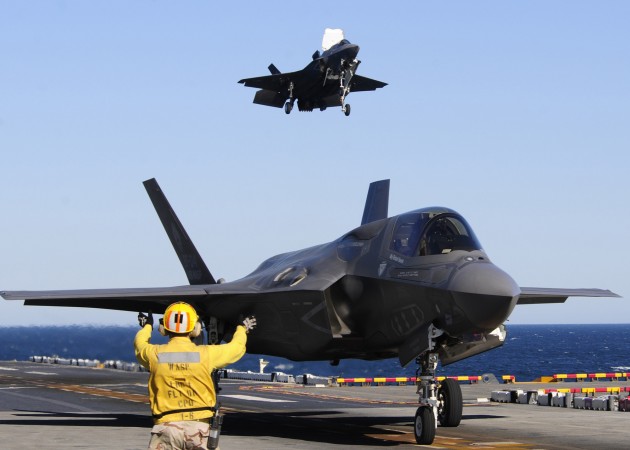Marines Put F-35B Flight Costs 17 Percent Lower Than OSD
Posted on
 PENTAGON: By combing through the assumptions — some of them deeply questionable — undergirding the Defense Department’s official cost estimates for the F-35B and refining them, the Marines say the plane should cost 16.6 percent less per flight hour than the current estimate. Since the F-35B is the most expensive plane to operate, lowering these cost estimates for the Joint Strike Fighter’s Marine version would have a substantial impact on the program’s overall costs.
PENTAGON: By combing through the assumptions — some of them deeply questionable — undergirding the Defense Department’s official cost estimates for the F-35B and refining them, the Marines say the plane should cost 16.6 percent less per flight hour than the current estimate. Since the F-35B is the most expensive plane to operate, lowering these cost estimates for the Joint Strike Fighter’s Marine version would have a substantial impact on the program’s overall costs.
“We believe we are going to achieve much greater savings than we are currently being credited for,” Marine Lt. Gen. Robert Schmidle, deputy commandant for aviation, told me in an interview here.
Among the questionable assumptions Schmidle highlighted is this whopper: the Office of Secretary Defense estimate developed by the Cost Assessment and Program Evaluation office (CAPE) predicted that the F-35B would be flown at full throttle in STOVL mode — which uses enormous amounts of fuel and utilizes the highly sophisticated lift fan system at much greater rates than the Marines project — about 80 percent of its time in the air.
Anyone who has watched the Harrier or the F-35B knows that Marines pilots rely sparingly on STOVL mode. It’s only used for a limited set of tactical moves and, usually, for taking off or landing the aircraft. The great majority of the plane’s flight time — could it be as much as 80 percent? — would be spent flying without using the lift fan and STOVL.
The current CAPE estimate assumes $41,000 an hour for the F-35B. A senior defense official said they will eventually bring the costs down to $30,000 per hour, with an interim figure of about $37,000. Schmidle also notes that the F-35B’s cost figures were extrapolated from the costs of the much older AV-8B Harrier.
Overall, once the F-35 replaces the three Marine aircraft — F-18, EA-6B, Harrier — it is designed to supplant the Marines will save an estimated $520 million a year in operations and maintenance costs in 2012 dollars, Schmidle says.
We understand Frank Kendall, undersecretary for aquisition, technology and logistics, and Sean Stackley, head of Navy procurement, have both been briefed on the new Marines estimates.
Why are the Marines so focused on these costs? “Probably the biggest threat to the airplane is the sustainment costs,” Schmidle told me.
In addition to the Marines lower cost estimates, the F-35 program office has lowered the program’s $1.1 trillion estimated costs over a half century to $857 billion, about 22 percent lower than the previous estimates. My colleague Tony Capaccio got ahold of the new information in written answers sent last month to the Senate Armed Services Committee.
Air Force Lt. Gen. Christopher Bogdan, head of the Joint Program Office building the F-35, told the SASC that the new information is derived from new data gathered from 7,000 hours of actual flight.
Subscribe to our newsletter
Promotions, new products and sales. Directly to your inbox.
